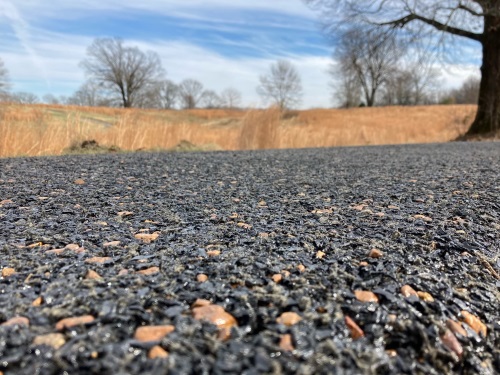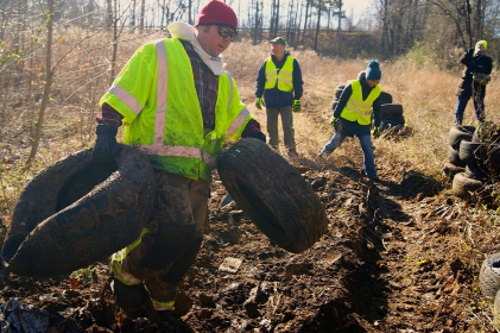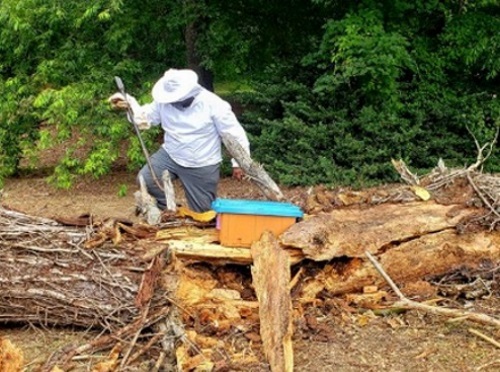FEDERAL ACTION
State DOTs Issue Drafts of EV Infrastructure Plans – AASHTO Journal
Federal agencies reverse Trump limits on habitat protection – AP
US House Transportation Panel Passes FEMA Bill – Transport Topics
Here’s how to meet Biden’s 2030 climate goals and dramatically cut greenhouse gas emissions – with today’s technology – The Conversation
President Biden’s Bipartisan Infrastructure Law to Provide $25.5 Million for Water Efficiency Projects in Eight Western States – US Department of Interior (Media release)
COVID-19
AI Tool for COVID Monitoring Offers Solution for Urban Congestion – IEEE Spectrum
Is It Safe To Fly? The National Academy Of Sciences, Engineering, And Medicine Weighs In – Forbes
NEPA
Maryland Starts NEPA Study for Bay Crossing Project – AASHTO Journal
INFRASTRUCTURE RESILIENCE AND SUSTAINABILITY
NYSDOT Begins ‘Engagement’ for Expressway Project – AASHTO Journal
Port of Morrow continued to pollute after January fine, now faces $2.1 million fine, state says – Oregon Capital Chronicle
FAA tests solar-power airfield lighting at Penn Yan Airport – CNY Central
Possible lead exposure around small airports – FlowingData
Why Salt Lake City wants residents to ‘adopt’ a storm drain – KSL.com
DOT Joins New Federal-State Partnership to Expand Domestic Offshore Wind Supply Chain – USDOT (Media release)
AIR QUALITY
California Considers ‘Carbon Farming’ As a Potential Climate Solution. Ardent Proponents, and Skeptics, Abound – Inside Climate News
New NDOT Highway Cement Standards To Reduce 4,000 Tons of Carbon Emissions Per Year – Nevada DOT (Media release)
ENVIRONMENTAL JUSTICE
FTA Supporting Projects for ‘Underserved Groups’ – AASHTO Journal
EPA Mulls How to Defend Environmental Justice Decisions in Court – Bloomberg
2 Tarpon Springs commissioners oppose mention of inequity in road safety plan – Tampa Bay Times
The essential reality and necessity of environmental justice – Capitol Weekly
New Jersey releases blueprint for landmark environmental justice law – Grist
NATURAL RESOURCES
Tree clearing at Port of Albany puts $29.5M federal grant for wind facility at risk – Spectrum News 1
Giant Company’s solar field shines a light on saving honeybees – PennLive
Sued over pollution, Port of Everett works on water quality issues – Daily Herald
Infrastructure law funds Nevada sagebrush restoration projects – Nevada Current
Louisiana DOTD: Litter caused flash flooding on Mississippi River Bridge Tuesday afternoon – WBRZ-TV
CULTURAL RESOURCES
Uncovering Stories of Lincoln Highway marker sites – York Daily Record
Mayor Bowser Celebrates the Extension of Metropolitan Branch Trail From Brookland to Fort Totten – DDOT (Media release)
HEALTH AND HUMAN ENVIRONMENT/ACTIVE TRANSPORTATION
Climate Change, Fossil-Fuel Pollution, and Children’s Health – New England Journal of Medicine
City of Bend adding incentives – and penalties – to address issues with Bird e-bikes being left around town – KTVZ-TV
Hiking trails project on Lake Michigan dunes gets $100K grant – MLive
Group’s lawsuit and call for freeze on bike lanes get first hearing as wires come down in Porter – Cambridge Day
Data shows biking in Charleston, South Carolina is growing but infrastructure is behind – WCSC-TV
TRB RESOURCES/ANNOUNCEMENTS
Strings Attached – Permissible Uses of Airport Property and Revenue – TRB (Webinar)
Assessing Public Health Benefits of Replacing Freight Trucks with Cargo Cycles in Last Leg Delivery Trips in Urban Centers Cargo Cycles in Last Leg Delivery Trips in Urban Centers – Mineta Transportation Institute/San José State University
FEDERAL REGISTER NOTICES
National Electric Vehicle Infrastructure Formula Program – FHWA (Notice of proposed rulemaking; request for comments)
Notice of Final Agency Actions on Proposed Railroad Project in California on Behalf of the California High Speed Rail Authority – FRA (Notice)
Notice of Intent To Prepare a Supplemental Environmental Impact Statement for the Colorado River Valley Field Office and Grand Junction Field Office Resource Management Plans, Colorado – Bureau of Land Management (Notice of intent)
Notice of Availability of a Draft Environmental Impact Statement for Ocean Wind, LLC’s Proposed Wind Energy Facility Offshore New Jersey – Bureau of Ocean Energy Management (Notice)
Draft Guidance for Vessel Sewage No. Discharge Zones – EPA (Notice of availability; request
for comment)
(Note: following are separate items)
Proposed Consent Decree, Clean Air Act Citizen Suit – EPA (Notice; request for public comment)
Proposed Consent Decree, Clean Air Act Citizen Suit – EPA (Notice; request for public comment)



